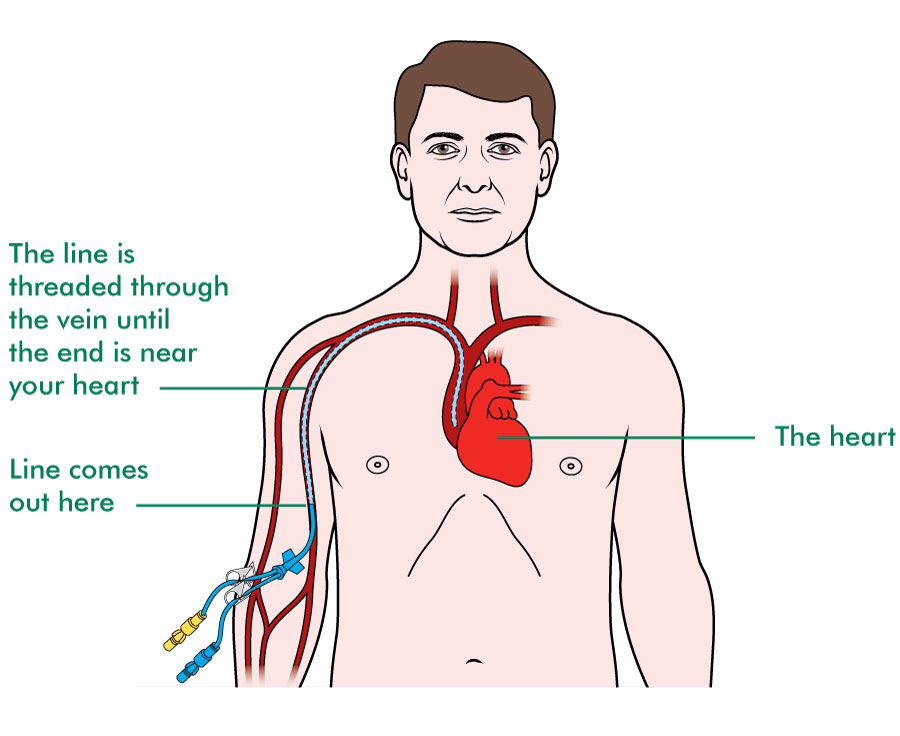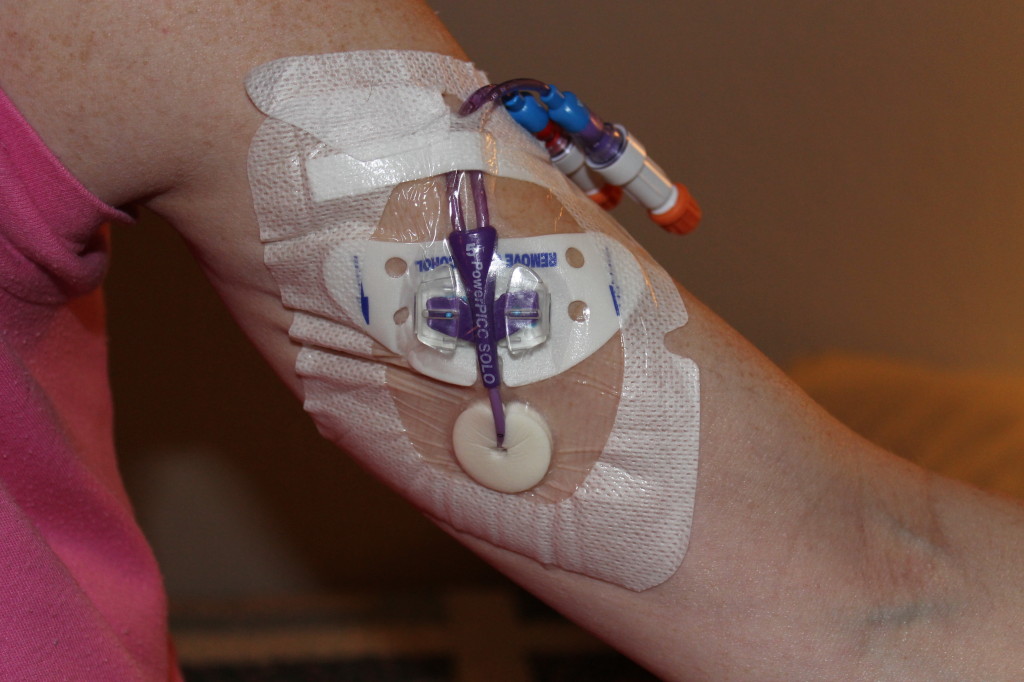Picc Line Not Drawing Blood
Picc Line Not Drawing Blood - The tube is flexible, so bending the arm does not cause harm. It is also used to take blood when you need to have blood tests. It is also used to draw blood when you need to have blood tests. Tape the catheter in place. Web prettykitty feb 23, 2010 • 8:42 pm would there be any chance that they could put a blood thinner in the picc just once to break up whatever is causing the line not to show a blood return?
Do not use your picc. Blood for laboratory tests can also be withdrawn from a picc. Avoid rough activities which may cause the catheter to be damaged or dislodged. Treatments, such as iv medications, can be given though a picc. Web prettykitty feb 23, 2010 • 8:42 pm would there be any chance that they could put a blood thinner in the picc just once to break up whatever is causing the line not to show a blood return? You need to rinse out the catheter after every use. I know that when my powerport chest port clogged, they used some type of blood thinner in it and it worked fine after that.
drawing blood cultures from picc Kina Pickard
If you are still unable to draw blood back into the syringe, do not use your picc. Web prettykitty feb 23, 2010 • 8:42 pm would there be any chance that they could put a blood thinner in the picc just once to break up whatever is causing the line not to show a blood.
How To Flush a PICC line (peripherally inserted central catheter) YouTube
If it fails the ability to give and take, then there is a problem with the device. Web be sure to flush pre and post infusion, flush well after lab sampling and always check for a blood return before use. Tape the catheter in place. There are a number of situations in which this is.
Drawing Blood Cultures From Picc DRAW IT OUT
If your facility uses heparin to lock off the catheter, be sure to instill the heparin in each lumen. The central line is not in the skin Web a picc line can also be used to draw blood for laboratory work. Web may 22, 2022 anaesthetics, itu no comments you may well be asked to.
Draw blood from picc line labquiz
In this article we will take you through the basics of picc lines, why they are needed, how to use them and some common pitfalls. A picc line is usually intended to be temporary and might be an option if your treatment is expected to last up to several weeks. Web may 22, 2022 anaesthetics,.
Picc Line Picture
If the line is no longer where it should be inside your vein, then it may not provide the ability to draw back from that location. It is also used to take blood when you need to have blood tests. Your child should still shower. It helps carry nutrients or medicine into your body. This.
Draw blood from picc line labquiz
If you are still unable to draw blood back into the syringe, do not use your picc. Web a picc line can also be used to draw blood for laboratory work. Web a peripherally inserted central catheter or “picc” is a thin, soft, flexible tube — an intravenous (iv) line. Web part of the port.
No blood return from the PICC line CVC Health Care
Valved catheters prevent backflow of blood into. Should you activase the line and it still does not draw blood you need to verify placement, the lack of blood return may indicate spontaneous malposition. Also avoid heavy lifting over 5 to 10 pounds. It also provides assessment, prevention, and troubleshooting tips for central lines. Web jodi.
Drawing Blood From Picc Line Nursing
It is very important to keep the picc line dressing clean and dry. A picc is used when you need intravenous (iv) treatment over a long period of time or if blood draws done the regular way (by individual needlesticks) have become difficult. Tegaderm dressing, needleless connectors, and disinfection caps must be changed. The line.
PICC Line Blood Draw Explained E Phlebotomy Training
I know that when my powerport chest port clogged, they used some type of blood thinner in it and it worked fine after that. Should you activase the line and it still does not draw blood you need to verify placement, the lack of blood return may indicate spontaneous malposition. Web when you try to.
What Is A PICC Line? Infusion Solutions Inc
Tape the catheter in place. Tegaderm dressing, needleless connectors, and disinfection caps must be changed. It is also used to draw blood when you need to have blood tests. Ideally when a line doesn't return blood an order should be obtained to instill altepase. At least once a week, your: Treatments, such as iv medications,.
Picc Line Not Drawing Blood Web using a picc line that does not draw blood is unacceptable. Web a picc line can also be used to draw blood for laboratory work. Blood for laboratory tests can also be withdrawn from a picc. At least once a week, your: Do not use your picc.
Tape The Catheter In Place.
Web do not swim or go in a hot tub with a picc line. Web picc lines can differ in size (50 cm to 60 cm), the number of lumens (single to triple), and care and maintenance routines. Web when you try to aspirate, the suction causes the flap to pull back and occlude the opening therefore you get no blood return. When your blood pressure is taken, use the arm without the picc line.
Treatments, Such As Iv Medications, Can Be Given Though A Picc.
Do not use your picc. You have a peripherally inserted central catheter (picc). It helps carry nutrients or medicine into your body. Tegaderm dressing, needleless connectors, and disinfection caps must be changed.
There Are A Number Of Situations In Which This Is Helpful For Both Healthcare Providers And The People They Treat.
If your facility uses heparin to lock off the catheter, be sure to instill the heparin in each lumen. It’s best if you can Ask your healthcare provider if you have questions. If you are still unable to draw blood back into the syringe, do not use your picc.
The Picc Falls Or Is Pulled Out.
Web a picc line can also be used to draw blood for laboratory work. A picc line can be used when a person needs iv therapy of any sort for a prolonged period. Web a peripherally inserted central catheter or “picc” is a thin, soft, flexible tube — an intravenous (iv) line. Avoid rough activities which may cause the catheter to be damaged or dislodged.









